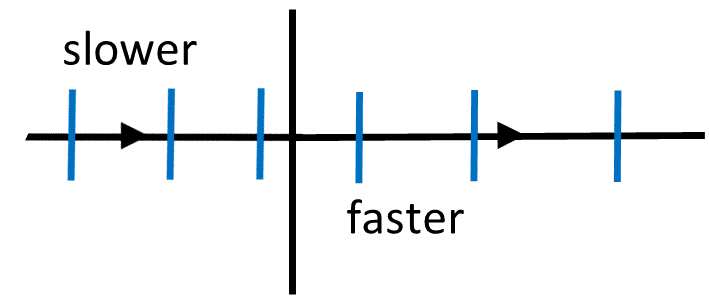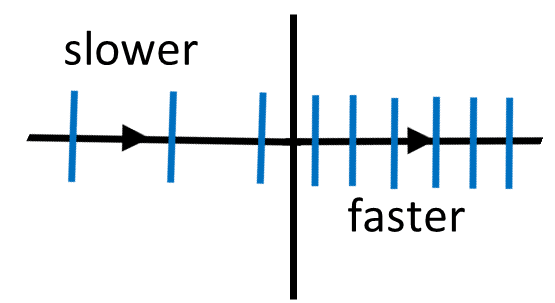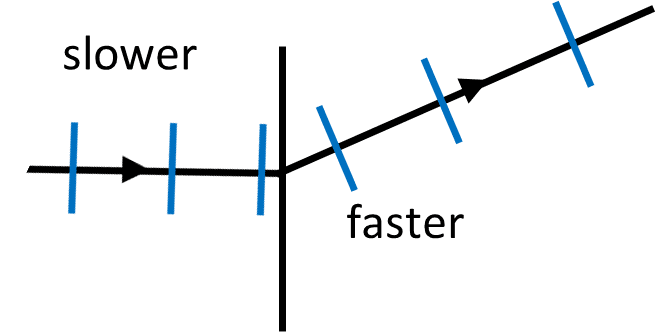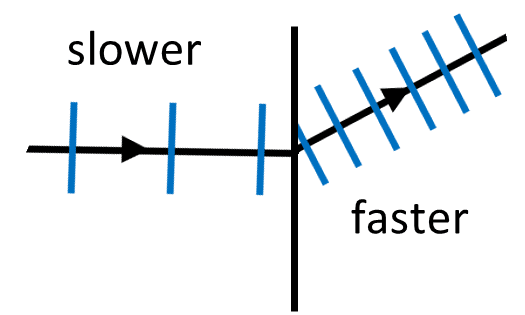Myths about teaching can hold you back
- Year 11
- AQA
- Higher
Refraction through a rectangular block (including wave front diagrams)
I can describe what refraction is, draw accurate diagrams of refraction and use the idea of wavefronts to explain what causes refraction.
- Year 11
- AQA
- Higher
Refraction through a rectangular block (including wave front diagrams)
I can describe what refraction is, draw accurate diagrams of refraction and use the idea of wavefronts to explain what causes refraction.
These resources will be removed by end of Summer Term 2025.
Switch to our new teaching resources now - designed by teachers and leading subject experts, and tested in classrooms.
These resources were created for remote use during the pandemic and are not designed for classroom teaching.
Lesson details
Key learning points
- Refraction is when waves travel from one transparent medium to another, causing a change in direction.
- When waves slow down, they turn towards the normal line (angle of incidence > angle of refraction).
- When waves speed up, they turn away from the normal line (angle of incidence < angle of refraction).
- Refraction can be investigated using a clear rectangular block, ray box and narrow slit, pencil, paper and a protractor.
- Refraction occurs when one side of a wavefront enters the new medium before the other, causing a change in wave speed.
Keywords
Refraction - Refraction occurs when waves travel from one transparent medium to another, causing a change in wave speed and direction.
Normal - The normal is an imaginary line drawn at 90° to a surface.
Angle of incidence - The angle of incidence is the angle between the incident ray and the normal.
Angle of refraction - The angle of refraction is the angle between the refracted ray and the normal.
Wavefront - Wavefronts are lines drawn to represent the peaks of a wave.
Common misconception
Pupils sometimes rote-learn what specific examples of refraction look like, rather than developing a more general understanding of the direction waves turn based on changes in wave speed.
Teach pupils the general theory of refraction and apply it to a variety of different examples where wave speed changes (e.g. sound waves refract in the opposite direction to light at an air-glass boundary due to the different wave speeds).
To help you plan your year 11 physics lesson on: Refraction through a rectangular block (including wave front diagrams), download all teaching resources for free and adapt to suit your pupils' needs...
To help you plan your year 11 physics lesson on: Refraction through a rectangular block (including wave front diagrams), download all teaching resources for free and adapt to suit your pupils' needs.
The starter quiz will activate and check your pupils' prior knowledge, with versions available both with and without answers in PDF format.
We use learning cycles to break down learning into key concepts or ideas linked to the learning outcome. Each learning cycle features explanations with checks for understanding and practice tasks with feedback. All of this is found in our slide decks, ready for you to download and edit. The practice tasks are also available as printable worksheets and some lessons have additional materials with extra material you might need for teaching the lesson.
The assessment exit quiz will test your pupils' understanding of the key learning points.
Our video is a tool for planning, showing how other teachers might teach the lesson, offering helpful tips, modelled explanations and inspiration for your own delivery in the classroom. Plus, you can set it as homework or revision for pupils and keep their learning on track by sharing an online pupil version of this lesson.
Explore more key stage 4 physics lessons from the Electromagnetic waves unit, dive into the full secondary physics curriculum, or learn more about lesson planning.

Content guidance
- Risk assessment required - equipment
Supervision
Adult supervision required
Licence
Prior knowledge starter quiz
6 Questions
Q1.In a wavefront diagram, what does a wavefront show?
Q2.Which statement about light is correct?
Q3.Match the terms with their meanings.
loses its brightness as it passes through the object
passes through the object
bounces off the surface of the object
Q4.In a ray diagram, the ray that approaches a surface or boundary is called the ray.
Q5.This ray diagram represents a light wave hitting a mirror. Which diagram shows the normal line drawn correctly (as a dashed line)?
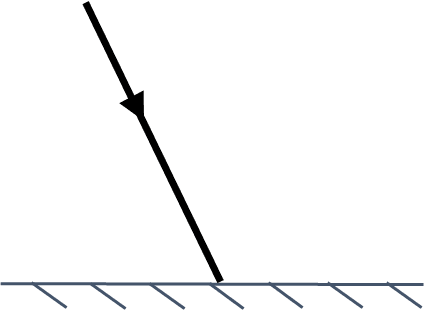
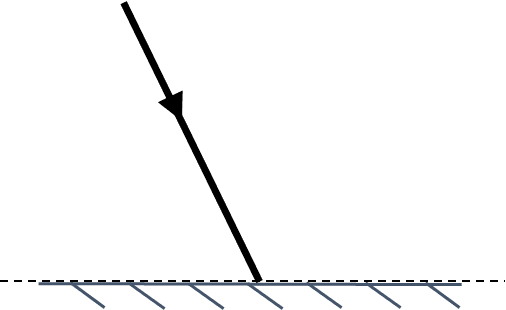
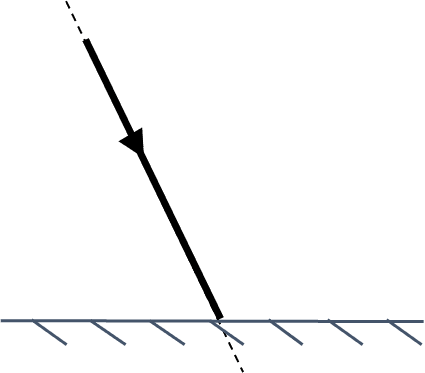
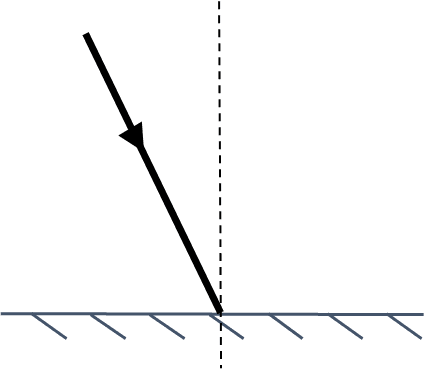
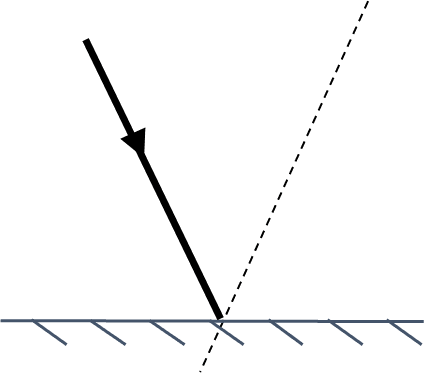
Q6.The ray diagram represents a light wave reflecting from a mirror. A student has placed a protractor over the diagram. What is the angle of incidence?
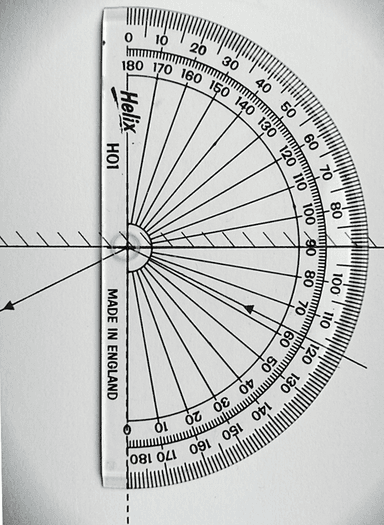
Assessment exit quiz
6 Questions
Q1.What is the angle of refraction?
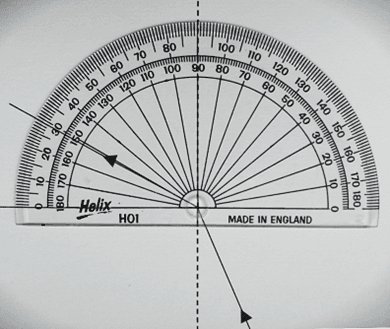
Q2.The ray diagram shows the refraction of a light wave when it crosses a boundary between two materials. Which of these statements are correct for light at a boundary from air into a transparent block?
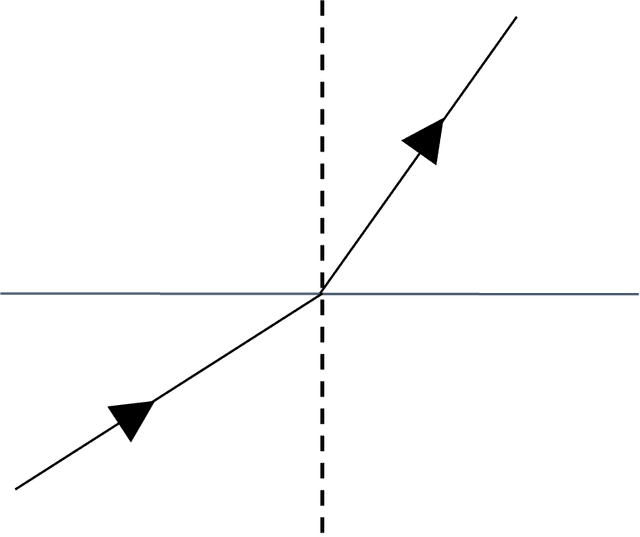
Q3.A student measures the angle of incidence and the angle of refraction at a boundary from air into a transparent block. The table shows the results. Which of these statements are correct?
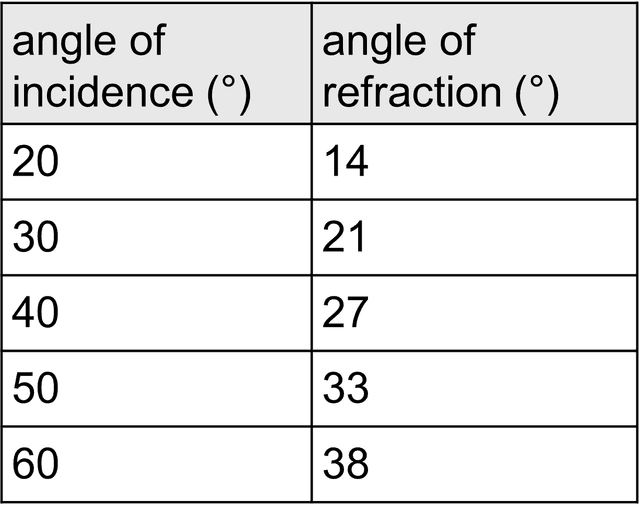
Q4.Which of these ray diagrams shows a possible path of a ray through a plastic block?
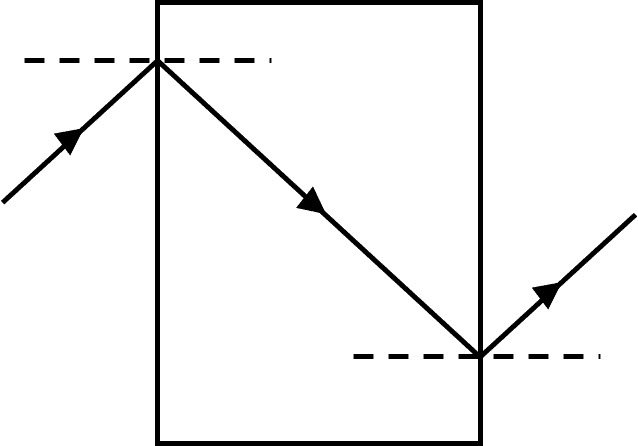
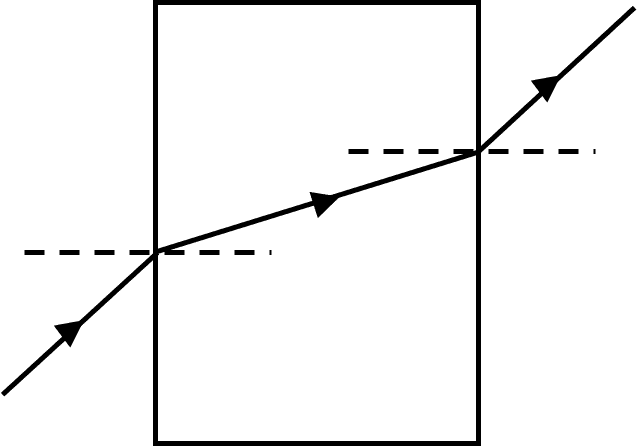
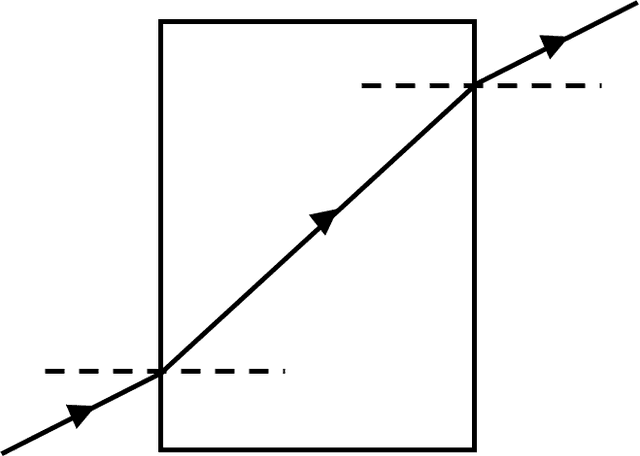
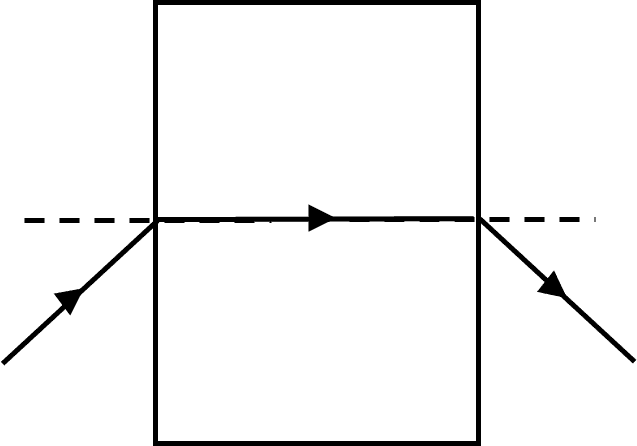
Q5.The diagram represents the refraction of a light wave as it passes from glass into air. It shows rays and wavefronts. Which of the statements are correct?
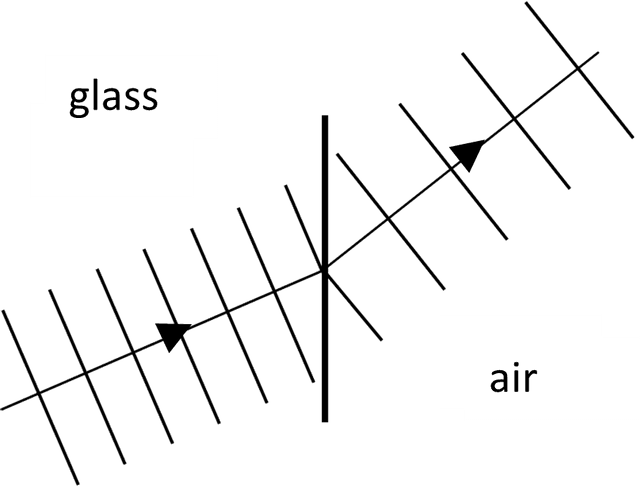
Q6.A light wave travels from a medium in which it is slower into a medium in which it is faster. The vertical black line shows the boundary between the two media. Which diagram is correct?
